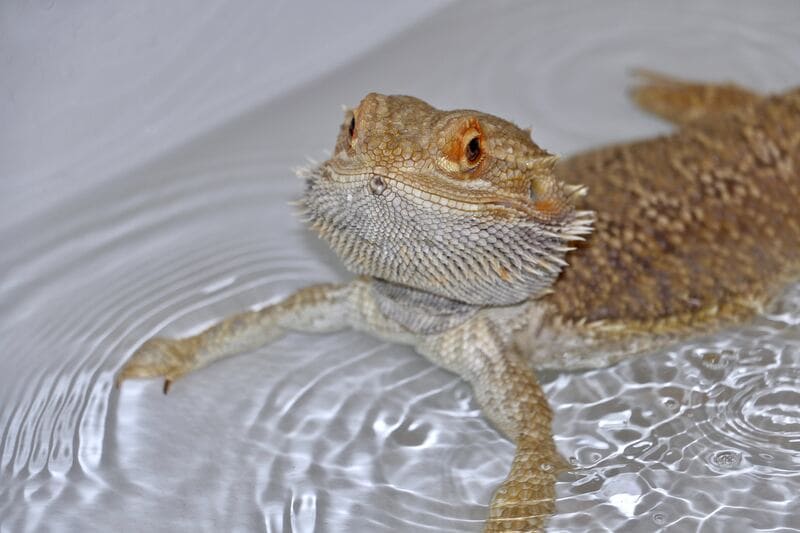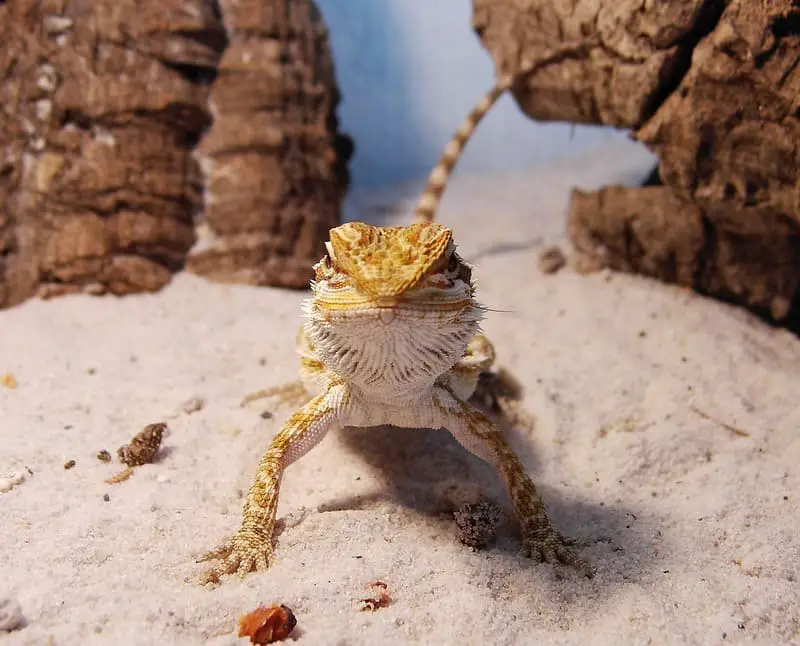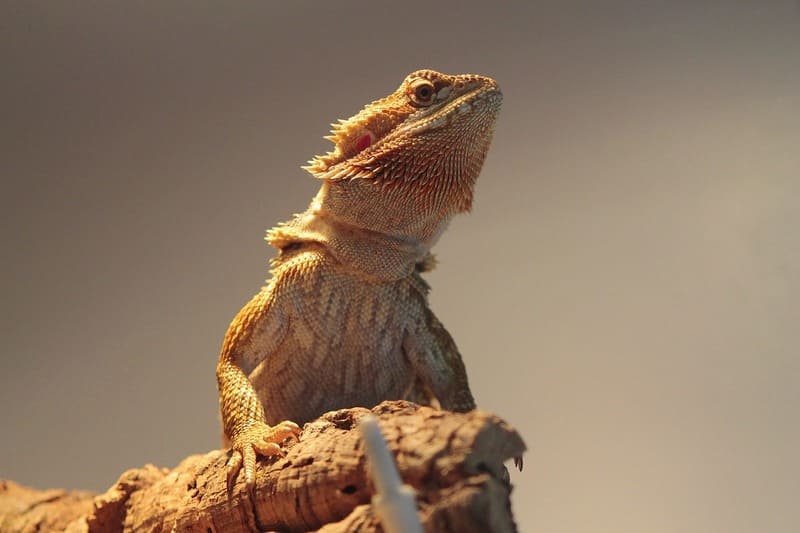Bearded dragons are unique and fascinating reptiles that have become increasingly popular as pets over the past few decades. Native to the arid regions of Australia, these creatures have distinct characteristics that set them apart from other reptiles. Among these features is their need for proper hydration and cleanliness. While bearded dragons don’t require traditional baths like dogs or cats, they do need a different form of bathing to maintain their health and well-being. In this comprehensive exploration of the topic, we will delve into the intricacies of bearded dragon care, including their bathing needs and why it’s important to provide them with the right conditions.

Bearded Dragons: An Overview
Before we discuss the bathing needs of bearded dragons, it’s crucial to have a basic understanding of these unique reptiles. Bearded dragons are medium-sized lizards with distinctive features that have earned them their name. They possess a row of spiky scales under their throats, which they can puff out to create the appearance of a “beard.” This beard is usually displayed as a defensive mechanism or during mating rituals.
Bearded dragons are diurnal creatures, which means they are active during the day and rest at night. Their average lifespan is around 10 to 15 years, but with proper care, some individuals can live even longer. These lizards come in a variety of colors and patterns, and captive breeding has led to the availability of many different morphs, each with its unique appearance.
These reptiles are known for their docile and friendly nature, making them excellent pets for both beginners and experienced reptile enthusiasts. However, they do have specific requirements when it comes to their enclosure, diet, and overall care. Bathing is one of these important care aspects that often raises questions among bearded dragon owners.
Bearded Dragon Bathing: Why and When
While bearded dragons don’t need daily or even weekly baths like some other pets, bathing plays a crucial role in their health and well-being. Here are several reasons why you should provide your bearded dragon with the occasional bath:
1. Hydration: Bearded dragons are native to the arid regions of Australia, and they have adapted to conserve water. In the wild, they obtain most of their hydration from the plants they eat and the morning dew. However, captive bearded dragons might not always drink enough water from their water dish. Bathing can help ensure that they stay properly hydrated.
2. Shedding: Bearded dragons periodically shed their skin as they grow. During the shedding process, their old skin can become dry and hard, making it difficult for them to remove it naturally. A bath can help soften the old skin and make shedding easier, preventing any complications or discomfort.
3. Cleaning: Like all creatures, bearded dragons can get dirty, and they might accidentally soil themselves. A bath is an effective way to clean them and prevent any skin or scale issues related to dirt and debris.
4. Relieving Constipation: Sometimes, bearded dragons can experience digestive issues, including constipation. A warm bath can help relax their muscles and potentially alleviate constipation.
5. Promoting Socialization: Bath time can be a great opportunity for interaction and socialization with your bearded dragon. Many enjoy being in the water, and it can be a positive and enriching experience for both you and your pet.
So, when should you bathe your bearded dragon? There is no one-size-fits-all answer, as the frequency of bathing depends on various factors, including your dragon’s age, overall health, and specific needs. However, here are some general guidelines:
1. Young Bearded Dragons: Baby and juvenile bearded dragons (less than 6 months old) may need more frequent baths, as they are still growing and developing. You can provide them with a bath 2-3 times a week to help with hydration and shedding.
2. Adult Bearded Dragons: Adult bearded dragons (6 months and older) typically need baths less frequently. A bath once every 2-4 weeks is usually sufficient to maintain their health and cleanliness.
3. Special Circumstances: There are situations where you might need to bathe your bearded dragon more often. For instance, if your dragon is experiencing shedding difficulties or constipation, additional baths might be necessary.
In addition to the frequency, it’s crucial to pay attention to the water temperature, the bath duration, and the environment in which you provide the bath. These factors can significantly impact the effectiveness and safety of the bathing process.

Proper Bathing Technique for Bearded Dragons
When it comes to giving your bearded dragon a bath, there are specific steps to follow to ensure their safety and well-being:
1. Prepare the Bath: Use a shallow container for the bath, like a plastic storage bin or a sink. The water should be lukewarm, around 90-100°F (32-38°C). Make sure the water level is no higher than your dragon’s elbows, ensuring they can touch the bottom with their feet.
2. Monitor the Water Temperature: Use a thermometer to check the water temperature before placing your dragon in the bath. Ensure the water doesn’t get too hot, as it can stress or harm your pet.
3. Be Gentle: Gently place your bearded dragon in the water. Initially, they might be a little nervous, but they will usually start to explore and swim around.
4. Supervise: Never leave your bearded dragon unattended during their bath. They can be surprisingly fast swimmers, and accidents can happen if they slip underwater or become overly stressed.
5. Offer Support: Some bearded dragons may not be strong swimmers, and they might need a shallow area where they can rest their head above water. You can place a clean, smooth rock or another object in the bath to provide this support.
6. Keep It Short: The bath should typically last for about 10-15 minutes. Longer baths can lead to stress and potential cooling of your dragon’s body temperature, which is not advisable.
7. Gently Clean if Necessary: If your bearded dragon has visible dirt or debris on their scales or skin, you can gently use a soft toothbrush to help clean them. Be very careful and use minimal pressure to avoid injuring the dragon.
8. Dry and Warm: After the bath, gently pat your bearded dragon dry with a soft, clean towel. Ensure that they are completely dry before returning them to their enclosure. You can also provide a basking spot to help them warm up and maintain their body temperature.
Shedding and Bathing
One of the significant benefits of bathing your bearded dragon is aiding in the shedding process. Shedding is a natural occurrence for all reptiles, including bearded dragons. During shedding, they shed their old skin to make way for the new, larger skin underneath.
A successful shed is essential for your bearded dragon’s health. If shedding doesn’t occur properly, it can lead to retained shed, which can cause discomfort, skin issues, and even health problems. Bathing can assist in the shedding process by softening the old skin and making it easier for your dragon to remove.
Here are some tips for using baths to help with shedding:
1. Pre-Shedding Soaks: About a week before your bearded dragon is expected to shed, you can provide more frequent baths, perhaps every 2-3 days. These pre-shedding soaks help soften the old skin and prepare your dragon for a successful shed.
2. Gently Assist if Necessary: Sometimes, your bearded dragon may need a little help with shedding. After a bath, you can gently rub a damp, soft cloth over their body to remove any loosened skin. Be very gentle and avoid pulling on any skin that is not ready to come off naturally.
3. Pay Attention to Toes and Tail: Bearded dragons can have difficulty shedding the skin on their toes and tail. Ensure these areas are properly hydrated during the bath, and if necessary, use a soft cloth to assist with shedding in these areas.
By incorporating these steps into your bearded dragon’s care routine, you can significantly reduce the likelihood of shedding problems and ensure a smooth, healthy shedding process.

Hydration and Bearded Dragons
Adequate hydration is crucial for the health of all living creatures, and bearded dragons are no exception. In their natural habitat, these lizards obtain much of their moisture from the plants they consume and the morning dew. However, in captivity, providing proper hydration can be a bit more challenging.
Bearded dragons often don’t drink water from a dish like other pets do. They are more likely to ignore a water dish, even when they are dehydrated. This is because they have evolved to conserve water, and their body’s response to dehydration is to seek out moisture in other ways, such as absorbing it through their skin.
Bathing your bearded dragon is an effective way to ensure they get the hydration they need. When you provide them with a bath, they can absorb water through their skin and cloacal vent (the opening through which they excrete waste). This helps maintain their overall hydration levels and keeps their bodily functions running smoothly.
To make sure you’re using bath time to provide hydration, follow these guidelines:
1. Use Lukewarm Water: The water should be lukewarm, not too hot or too cold. Bearded dragons are more likely to absorb water through their skin when the water temperature is comfortable.
2. Don’t Overdo It: While regular baths can help with hydration, it’s essential not to overdo it. Too much time in the water can lead to stress, and an overly wet environment can contribute to skin problems. Stick to the recommended bath frequency based on your dragon’s age and needs.
3. Monitor Their Behavior: Pay attention to your dragon’s behavior during the bath. They may drink water directly from the bath, or they might just soak and absorb water through their skin. In either case, you are helping them stay hydrated.
4. Provide Drinking Water: In addition to the occasional bath, always have a clean water dish available in your dragon’s enclosure. Even if they don’t use it as their primary water source, some bearded dragons may still choose to drink from it when they need to.
By incorporating bathing into your bearded dragon’s routine, you can help ensure they stay adequately hydrated, which is essential for their overall health and well-being.
Dealing with Constipation
Constipation is a common issue that can affect bearded dragons, just like any other animal. It occurs when there is difficulty passing feces, and it can be uncomfortable or even painful for your pet. In severe cases, constipation can lead to impaction, a more serious condition where the reptile is unable to pass waste, which can be life-threatening.
Bathing can help alleviate constipation in bearded dragons in a few ways:
1. Warmth and Relaxation: The warm water of the bath can help relax your bearded dragon’s muscles and potentially stimulate their digestive system, making it easier for them to pass feces.
2. Hydration: Proper hydration can soften the fecal matter, making it easier for your dragon to pass it.
3. Massage: Gently massaging your bearded dragon’s abdomen while they are in the bath can also help stimulate bowel movements.
If you suspect that your bearded dragon is constipated, you can offer them a warm bath to see if it helps. However, if the issue persists or worsens, it’s crucial to consult a veterinarian who specializes in reptile care for further guidance and treatment.
Cleaning and Bathing
Bearded dragons are generally tidy creatures, but like any pet, they can get dirty from time to time. This can happen from various activities, such as digging, exploring their enclosure, or even eating. When they get dirty, it’s essential to clean them to prevent skin issues or infections.
Bathing your bearded dragon is an effective way to clean them. The warm water can help soften any stuck-on debris or dirt, making it easier to remove. Here are some tips for cleaning your bearded dragon during a bath:
1. Soak and Gently Scrub: Let your bearded dragon soak in the warm water, and then gently scrub their skin with your fingers or a soft toothbrush to remove any dirt or debris. Be very gentle, as their skin is delicate.
2. Focus on Problem Areas: Pay particular attention to areas that are prone to getting dirty, such as their feet, the underside of their body, and their head.
3. Rinse Thoroughly: After cleaning, rinse your bearded dragon with clean, lukewarm water to remove any soap or residue.
4. Pat Dry: Gently pat your dragon dry with a clean, soft towel. Ensure that they are completely dry before returning them to their enclosure.
It’s important not to use any harsh soaps or chemicals when cleaning your bearded dragon, as this can be harmful to their skin and overall health. Plain, lukewarm water is usually sufficient for cleaning.
Common Bathing Mistakes to Avoid
While providing baths for your bearded dragon can be beneficial, there are some common mistakes to avoid to ensure the safety and well-being of your pet:
1. Using Cold Water: Bearded dragons are ectothermic, meaning their body temperature is regulated by their environment. Cold water can lower their body temperature and cause stress. Always use lukewarm water for their baths.
2. Overly Frequent Baths: Bathing your bearded dragon too often can lead to stress and skin issues. Stick to the recommended bath frequency based on their age and needs.
3. Leaving Them Unattended: Never leave your bearded dragon unattended during a bath. They can be fast swimmers and might get into a dangerous situation if not supervised.
4. Using Soap or Detergents: Never use soaps, detergents, or cleaning agents in the bathwater. Plain, lukewarm water is all that’s needed to clean your bearded dragon.
5. Rough Handling: Be very gentle when cleaning or assisting with shedding. Avoid any rough or forceful actions, as this can harm your dragon.
6. Overstressing: Some bearded dragons may not enjoy baths, and that’s okay. If your dragon seems overly stressed during bath time, you can try adjusting the water temperature or providing a shallow area where they can rest their head above water.
By avoiding these common mistakes and following the proper bathing techniques, you can ensure that your bearded dragon benefits from their baths without any negative consequences.
Potential Risks of Bathing
While bathing is generally safe and beneficial for bearded dragons, there are some potential risks to be aware of:
1. Stress: Some bearded dragons may find baths stressful, especially if they are not used to the experience. Stress can have negative effects on their health, so it’s essential to monitor their behavior and adjust the bathing routine if necessary.
2. Respiratory Infections: Bearded dragons can be susceptible to respiratory infections if they are exposed to cold, damp environments. Ensure that the bathing water is warm and that your dragon is thoroughly dried after the bath to prevent respiratory issues.
3. Drowning: Though bearded dragons are natural swimmers, accidents can happen. Always supervise your pet during their bath to prevent drowning.
4. Skin Issues: While baths can help with shedding and cleaning, over-bathing or using water that is too hot can lead to skin issues such as excessive dryness. It’s crucial to find the right balance in terms of bath frequency and water temperature.
5. Handling Issues: Handling your bearded dragon during a bath may be necessary for cleaning or assisting with shedding, but it can also be stressful for them. Be sure to handle them gently and minimize handling when it’s not necessary.
While these risks are worth considering, they can be minimized or avoided altogether by following proper bathing techniques and closely monitoring your bearded dragon during their bath.
Conclusion
Bearded dragons are unique and captivating reptile pets that require specific care, including occasional baths. Bathing helps with hydration, shedding, cleaning, and addressing issues like constipation. By incorporating bathing into your bearded dragon’s care routine and following the proper techniques, you can contribute to their overall health and well-being.
It’s important to remember that while bathing is a valuable aspect of bearded dragon care, it’s not the only one. Proper enclosure setup, diet, and overall husbandry are equally important. Additionally, each bearded dragon is an individual, and their specific needs may vary. Regular observation of your pet’s behavior and health can help you tailor their care to their unique requirements.
If you’re unsure about the best approach to bathing your bearded dragon or if you encounter any health concerns, consult with a veterinarian who specializes in reptile care. They can provide guidance, advice, and treatment when necessary, ensuring that your bearded dragon leads a healthy and happy life as a beloved member of your family.
